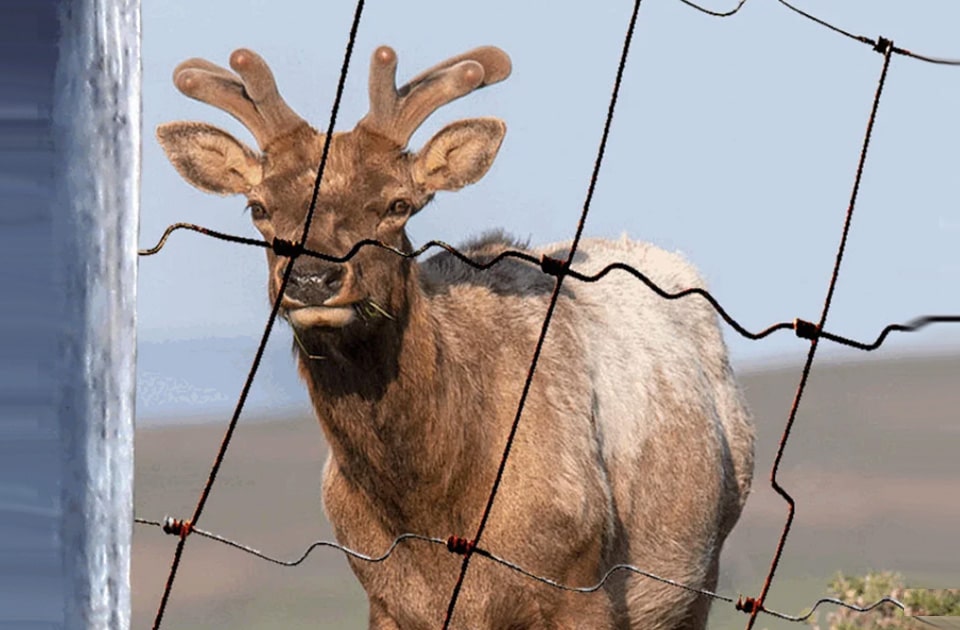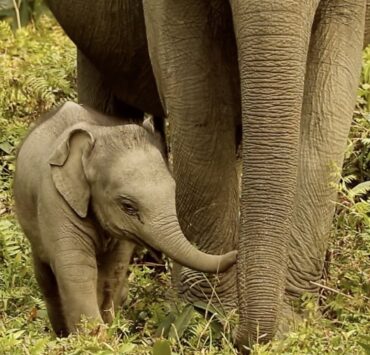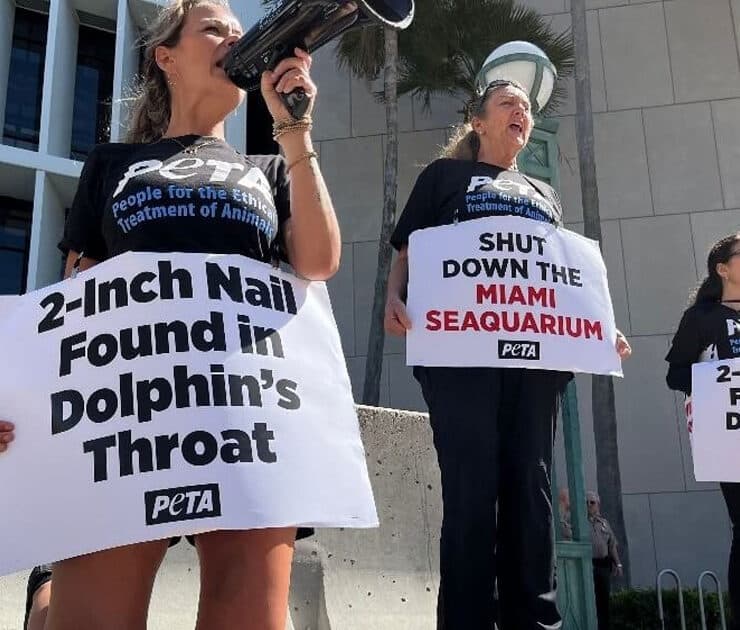Help California’s Tule Elk from Dying of Thirst Because of Animal Agriculture

Animal lovers nationwide are being urged to comment immediately to the National Park Service and endorse Plan “B” that would finally remove the 3-mile-long fence at Point Reyes National Seashore that’s killing Tule Elk.

Los Angeles, September 8th, 2023 — Animal lovers call it a race against time. American citizens have until Monday, September 25, 2023, to comment on the proposal by the National Park Service (NPS) to remove a 3-mile-long fence at Point Reyes National Seashore that keeps Tule Elk from accessing water, causing the slow, gruesome deaths of hundreds of elks. The fence, which local cattle ranchers want to keep in place, has been the focus of large demonstrations by environmentalists and animal activists. whose voices seem to have finally been heard by the authorities.
However, animal protection organizations, like In Defense of Animals, warn that the animal agriculture industry may put pressure on the government to keep the fence, despite the huge public outcry against it. IDA is urging the public to comment now. IDA’s link, just below, makes commenting a 10-second, automatic process that sends your comment directly into the government form.
Click Here to Comment Now Via In Defense of Animals
While the IDA link above makes it so easy, you can also comment by clicking directly on the NPS consultation webpage itself and writing in favor of “Alternative B: Unconfined Elk Herd and Pierce Ranch Core Area,” as opposed to alternative A, which favors keeping the fence.
In Defense of Animals and The TreeSpirit Project, two organizations leading the charge against the fence, spoke to UnchainedTV’s Jane Velez-Mitchell. IDA’s Fleur Dawes and Tree Spirit’s Jack Gescheidt say it’s crucial for the public to act immediately by commenting in favor of alternative B to remove the deadly fence.
What Is the Problem with Tule Elk

Fleur Dawes is an experienced communications expert who has worked in the animal rights sector since 2004. She leads In Defense of Animals’ efforts to get media coverage for campaigns on behalf of animals. She explains the problem facing California’s Tule Elk:
“You may not have heard of Tule Elk, and the reason why is because they are incredibly rare. There used to be a lot of them all over California. They are an endemic native species, but now, unfortunately, there are far fewer of them, and the largest remaining herd is at Point Reyes National Seashore, just North of San Francisco. There are 500 who are trapped and suffering horribly at the seashore. They are dying of thirst, and they are dying of hunger. They’re in this terrible situation, and it’s all unfortunately due to some ranches that are operating on a National Seashore.”
There are several private ranches for beef and dairy production operating in the park. IDA alleges the ranches contaminate the water with all the excrement from the cows. And there’s a 3-mile-long fence which prevents one of the elk herds, the biggest of all, from getting to fresh water to drink.
IDA wants people to support the proposal to remove the fence and demand removal of the ranches at the root of the problem, saying they do not belong on a natural preserve. To achieve that, IDA has created a webpage so citizens can demand all this. She said:
“One important thing that we want to say is why we’re asking you to go to IDAUSA.org/ELK is to also make sure that you mention that you are not happy with the ranches. You want the fence down, that’s the important thing, but you also care about having the ranches out. They were paid off years ago, they were given very generous compensation from taxpayers to leave and establish ranches elsewhere. All of them established ranches elsewhere, but they’ve also kept on their leases in the National Park, at a very favorable rate.”
“It’s disgusting to think that our tax dollars are going on confining and killing wild animals in a National Park and subsidizing the people who are killing them.” — Fleur Dawes, IDA
The Ranchers Are Threatening the Tule Elk

Jack Gescheidt is an environmental advocate, activist and consultant, founder of The TreeSpirit Project which raises awareness of the critical role of trees, forests and the natural world in our lives. He is the Tule Elk consultant for In Defense of Animals. Raised in NYC, he has been happily living in the beautiful San Francisco Bay Area since 1996. He explains more about the Elks at the park:
“There are about 500 elk in the park, in three different herds. The largest herd is behind that fence, with about 260 animals currently, and they suffer and die because they are confined. The cattle ranches are privately owned renters of the land. They do not own the land. They sold the land for millions of dollars decades ago but have, with their political and economic clout, lobbied the government, and I would say corrupted the National Park Service policy about wild animals.”
When the elk were first reintroduced to the park in 1978 the fence went up and it’s been there ever since. Now that the NPS seems to have changed its position on this, Gescheidt is encouraged:
“How many battles do you hear of where we the people, activist groups, and animal rights organizations, are fighting and fighting without any progress? Here, in just a few short years, and that’s a quick time … it’s a remarkable turnaround.”
The TreeSpirit Project also has an action website dedicated to this campaign.
“It’s a long process. It’s not going to happen tomorrow, but we hope within a year that fence will be down, the ranchers hopefully won’t sue us or the park service and try to stop this whole thing.” — Jack Gescheidt, The TreeSpirit Project
What's Your Reaction?
Jordi Casmitjana is a vegan zoologist and author.









